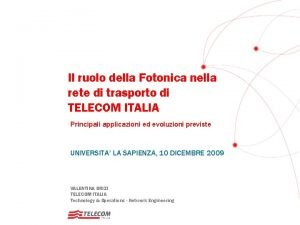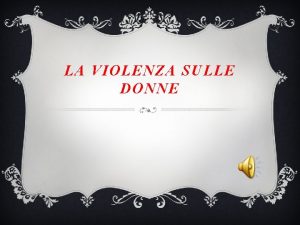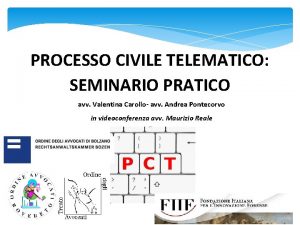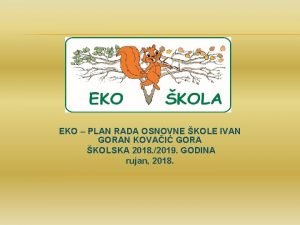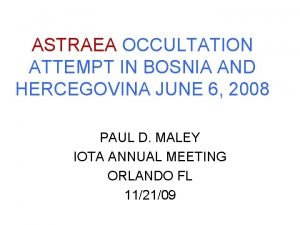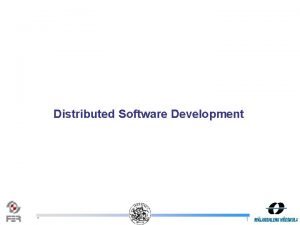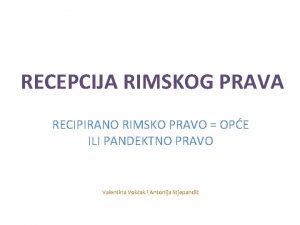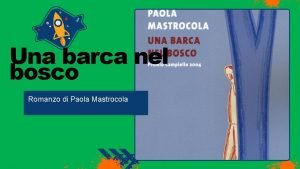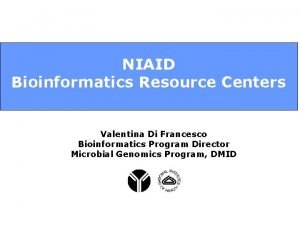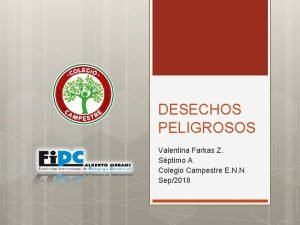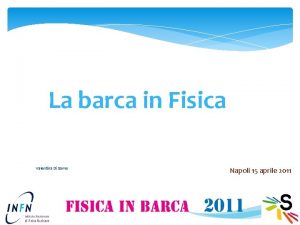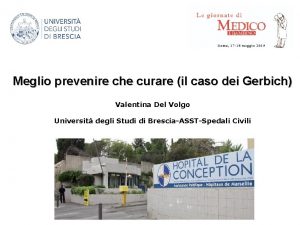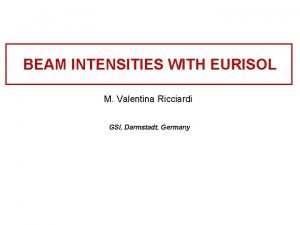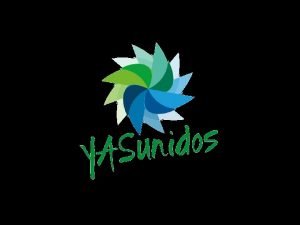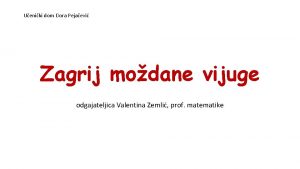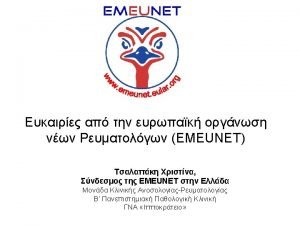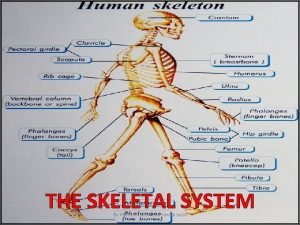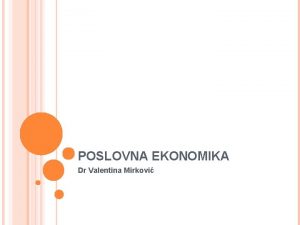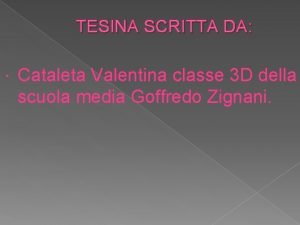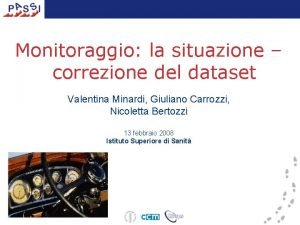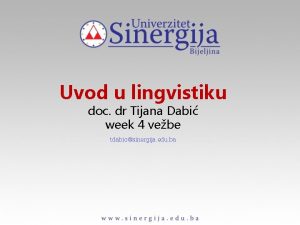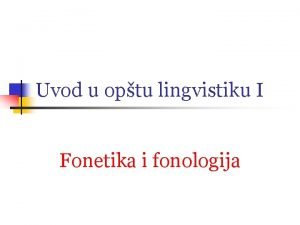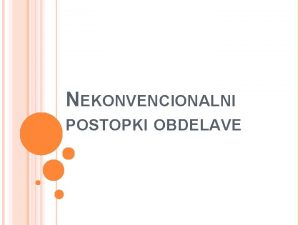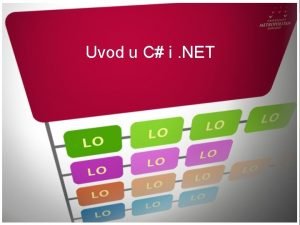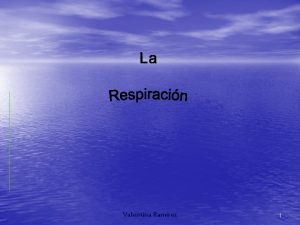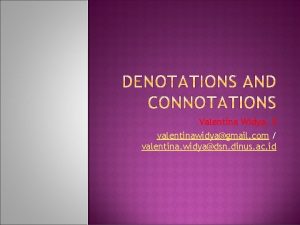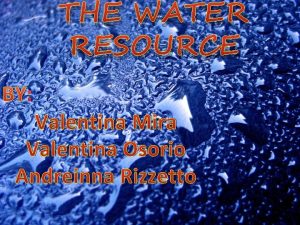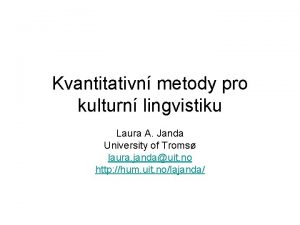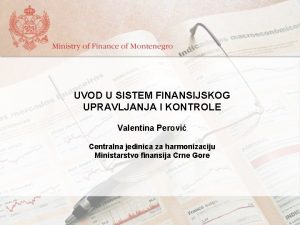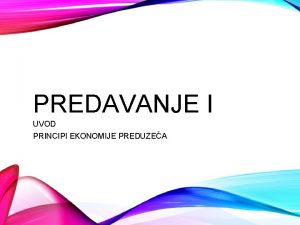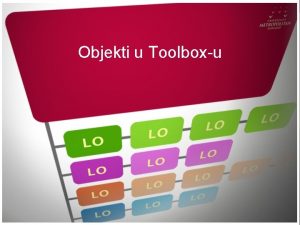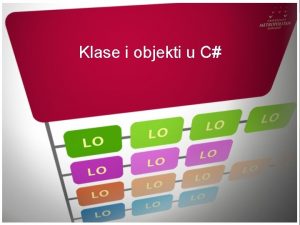Uvod u lingvistiku Week 2 DOC DR VALENTINA



























- Slides: 27

Uvod u lingvistiku Week 2 DOC. DR VALENTINA BOŠKOVIĆ MARKOVIĆ

Morfologija Literatura: 1. Ranko Bugarski, Uvod u opštu lingvistiku 2. Jean Atchinson, Atchinson’s Linguistics

Morfologija se bavi strukturom, oblicima i građenjem reči. Može se podeliti na flektivnu morfologiju, vezanu za obličke promene u okviru pojedinih vrsta reči kao izraz gramatičkih kategorija, i tvorbenu (leksičku, derivacionu) morfologiju, koja proučava procese građenja leksičkih jedinica. Osnovna jedinica na morfološkom nivou jeste morfema. Morfema – najmanja jedinica jezičke strukture koja ima značenje ili gramatičku funkciju. Razlika između reči i morfeme. Jedna reč može da sadrži samo jednu morfemu (plav, na, pod, krov, mir) ili više morfema (plav-o-kos, na-sip, mir-o-ljub-iv). Reč ne može da sadrži manje od jedne morfeme, jer je po definiciji najmanja jedinica takve vrste.

Morfeme BROJ: U rečenici je obično više morfema nego reči, ali pošto morfeme kombinujemo da napravimo reči, u jeziku ima više reči nego morfema (npr. rad: radnik, radnički, radionica, uraditi, preraditi itd. ) DUŽINA: Postoji priličan raspon od jedne foneme/grafeme (i, u, o) do više njih (vino, karakter). Reči iste dužine mogu da sadrže podjednak broj morfema npr. mušterija, karakter – 1 morfema i nestrpljiv (ne-strp –ljiv) 3 morfeme. OBLIK (stalan i promenjiv). Uglavnom je stalan (oko, plav, pre-, ljiv) dok kod nekih može biti promenjiv npr. raz- (raz-men-i-ti/ras-ter-a-ti/raš-čist-i-ti). U engleskom: loudly (loud-ly) isto, različito /-ed/ walked /t/, lived /d/, shouted /id/. The sleep walk ing albatross chant ed a dream y llulaby 1 2 3 4 5 6 7 8 9 10 11

Morfema - nastavak MORF – konkretna govorna realizacija morfeme, tj. njen fonološki izraz; ALOMORFI – različita kontekstualno uslovljena ostvarenja iste morfeme (npr. Raz – raz, ras, raš ili u engleskom –ed - /d/ /t/ /id/. MORFOFONEMA – Za slučajeve kada su ovakvim fonolškim varijantama na granicama morfeme pridružene gramatičke razlike. npr. Junak –junače, junaci apstraktan morfofonemska jedinica K se na kraju osnove /juna. K/koja se u različitim fonološkim kontekstima ostvaruje kao /k/, /č/ ili /c/ - učestvujući tako formalnom razlikovanju nominativa jednine, vokativa jednine i nominativa/vokativa množine.


PODELA MORFEMA 1 SLOBODNE I VEZANE Slobodne su one koje mogu da stoje samostalno (npr. na, kod, sunce, Sanja. . . iz radnik – rad, iz potkrovlje krov. . . ). Slobodne morfeme su ekvivalentne prostim (tj. Jednomorfemskim) riječima: oko, rad, čovek, istovrijemeno su morfeme i riječi. Vezane su one koje ne mogu da se upotrebljavaju samostalno, već samo u kombinaciji sa drugim morfemama u sastavu riječi (kao –nik iz radnik, kao –lje iz potkrovlje, kao – ras/raz iz raskorak itd. Vezane morfeme ne mogu da funkcionišu kao riječi, ali učestvuju u građenju riječi i njihovih gramatičkih oblika. In English: Free and bound morhemes

PODELA MORFEMA 2 LEKSIČKE I GRAMATIČKE Leksičke morfeme imaju izrazito leksičko značenje, dok god gramatičkih preteže gramatička funkcija (pev-a) Slobodne morfeme po pravilu su leksičke, dok vezane morfeme mogu biti leksičke ili gramatičke. Nekada nije baš lako odrediti broj morfema i njihovu vrstu.

ENGLISH MORPHOLOGY §Stems/roots §Affixes (prefixes and suffixes) §Morphological word formation: DERIVATION and COMPOUNDING §Derivation: forming a new word from an existing word by adding affixes; the process of creating separate, but morphologically related words (e. g. -un, -ness; divine/divinity, etc) §Compounding: combining complete word forms into a single compound unit (e. g. sawdust) §Coining: creation of new words: COVIDIOT: a stupid person who doesn’t want to listen to the authorities and leaves his/her home despite the corona virus (a completely new word formed on 21 st March, 2020) §Abbreviation: forming shortenings

ENGLISH MORPHOLOGY § 2 types of morphology in English: §INFLECTIONAL MORPHOLOGY (breaking words apart) §LEXICAL WORD FORMATION (construction of new base words, especially those from multiple morphemes) § 2 types of words in English: §SIMPLE WORDS- they don’t have internal structure (e. g. BUILD, WORK, RUN) §COMPLEX WORDS- they have two or more morphemes (e. g. worker, working etc)

ENGLISH MORPHOLOGY §MORPHEME: a minimal language unit which has its meaning (it could be a prefix, a suffix or ending) §FREE MORPHEMES: simple words (e. g. work, high, etc) §BOUND MORPHEMES: morphemes which must be attached to another one to receive a certain meaning (e. g. UN-KIND-NESS: KIND is a free morpheme, whereas UN- and –NESS are bound morphemes) §INFLECTIONAL MORPHEMES: they don’t create separate words, but they modify words in which they occur (e. g. –ED, -S for nouns in plural…)

DERIVATIONAL MORPHEMES


INFLECTIONAL MORPHEMES



Mention the free and bond morphemes in the following words: 1. Undo: UN- bound; DO- free 2. Disagreement: DIS- bound, AGREE- free, MENT- bound 3. Beautiful: BEAUTY- free, FUL- bound 4. Friendship: FRIEND- free, SHIP- bound 5. Meaningless: MEAN- free, ING- bound, LESS- bound

key

1. Identify the free morphemes in the following words: kissed, freedom, stronger, follow, awe, goodness, talkative, teacher, actor. KISS, FREE, STRONG, FOLLOW, AWE, GOOD, TALK

Some of the words contain suffixes. Identify the suffixes by underlining them a. happiness b. unkind c. freedom d. flowers e. brother f. blackboard

Key a. happiness b. unkind c. freedom d. flowers e. brother f. blackboard

The component morphs of the morphologically complex words have been separated by a hyphen (–). Indicate which of these morphs are bound morphs and which are free morphs, and which of the bound morphs are inflectional and which derivational. Example: hit–s, hit: free, –s: bound, inflectional a. en–courage–ment en- bound, courage-free, ment-bound, derivational b. king–dom–s king-free, dom- bound, derivational, s-inflectional c. stud–ent–hood d. anti–soviet–ism e. bi–annu–al–ly f. read–ing–s

‘Invisible’ derivational morphology 1. Provide verbs derived from the following words: a. b. c. d. ‘permit n ‘contact n ‘perfect adj ‘convert n

For each of the following bound morphemes, determine whether it is derivational or inflectional and give two words in which it appears: Example: –able: derivational eatable; readable a. –ity derivational: eternity, maternity b. –s inflectional: photos, friends c. un– derivational: unspoilt, untrue d. –ing derivational: boring, interesting e. –al derivational: removal, dismissal f. –er derivational: worker, inflectional: harder, stronger g. –ed inflectional: hired, informed

2. Transcribe the following words separately as nouns and as verbs. Comment on the differences you encounter. • • advice n belief n mouth n breath n Provide the meaning of both categories

HOMEWORK §Divide these words into their smallest meaningful parts: §LANDHOLDER §SMOKE-JUMPER §DEMAGNETIZABILITY

What to do during the quarantine: https: //www. travelandleisure. com/attractions/museums-galleries/museums-with-virtualtours? fbclid=Iw. AR 2 Mpn 6 Ly-y 0 -IImifhrsz. Y 8 Ikj. D 29 CHy. Op. NQJUA 5 hu. Aa. Gyl 2 Ef. OZf 96 y 8 Q (virtual museum tours) https: //www. oblakoder. org. rs/kulturni-sadrzaji-koje-mozete-pratiti-besplatnoonlajn/? fbclid=Iw. AR 3 ZDOf. Gu. JUOD 0 GK 6 RNKRtj. VXot-7 XK 1 GBs. NYp. Bt-5 ML 4 UMKOOawa. IEDmmk
 Week by week plans for documenting children's development
Week by week plans for documenting children's development Valentina wss
Valentina wss Valentina vuk
Valentina vuk Ashley hart feet
Ashley hart feet Valentina pitzalis wikipedia
Valentina pitzalis wikipedia Valentina carollo
Valentina carollo Ivan milat
Ivan milat Valentina cattivelli
Valentina cattivelli Valentina mindoljevic
Valentina mindoljevic Valentina menabue
Valentina menabue Postglosatori
Postglosatori Una barca nel bosco commento
Una barca nel bosco commento Niaid learning center
Niaid learning center Hrvoje draksler
Hrvoje draksler Valentina farkas
Valentina farkas Teorema di bernoulli
Teorema di bernoulli Valentina boeva
Valentina boeva Del volgo valentina
Del volgo valentina Valentina ricciardi
Valentina ricciardi Valentina gaviria trans
Valentina gaviria trans Mi smo četiri brata jedan drugog hvata
Mi smo četiri brata jedan drugog hvata Porn hub valentina
Porn hub valentina Valentina vardanyan
Valentina vardanyan Valentina cross
Valentina cross Valentina mirkovic
Valentina mirkovic Valentina fusco documenti
Valentina fusco documenti Valentina 94 mega
Valentina 94 mega Valentina minardi
Valentina minardi

